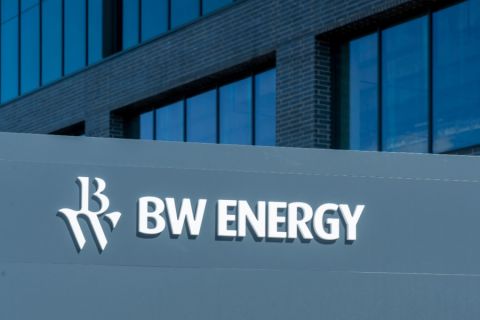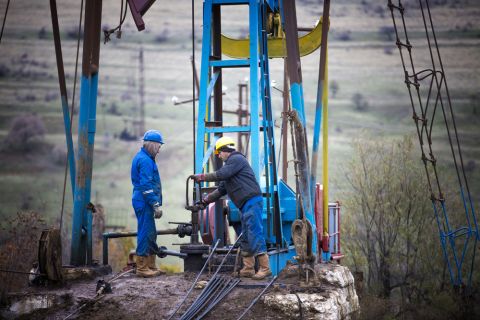Presented by:
In fits and starts, the oil and gas industry has been rallying all year, but it still faces uncertain times ahead thanks to factors outside its control, including COVID variants that may stall a full economic recovery, not to mention roadblocks thrown up from the halls of Congress, the Department of Energy or the EPA.
Nevertheless, the industry endures. We need to shout out its contributions to society and the enormous effort that entails in the face of many risks.
In the last four quarters through June 30, the sector (as measured by Bernstein Research and using an aggregate of 44 E&P companies’ results) used up $61 billion in spending. It produced a grand total of 5.5 Bboe.
We need to shout this factoid to the anti-fossil fuel folks who believe renewables can supply all of our energy needs. Does the renewable sector even spend that much money, and can it yet deliver that much energy equivalent to consumers and do it on a regular basis, day in and day out?
We think not.
For now, let’s keep on keeping on and take all the good news we can get about commodity prices. Natural gas has been marking its highest highs in many years, trading above $5 per thousand cubic feet, and that may continue.
“The [Gulf of Mexico] shut-ins [due to Hurricane Ida] are exacerbating an already tight market marked by record LNG exports, lackadaisical production growth and a growing inventory deficit compared with year-ago and five-year average levels,” said a report from Rusty Braziel and RBN Energy. “Those underlying fundamentals will remain a trigger point for price spikes well after Ida-related shut-ins recover.”
WTI crude oil has been trading above $60/bbl for several months now, knocking on levels above $70 at times only to retreat a few days later.
Analyst Bob Brackett at Bernstein Research has developed a handy way to measure what is going on in public markets. To examine the broad trends, he aggregates the quarterly performance of 44 E&P companies into one large “proxy” company and then charts the changes the sector has made from quarter-to-quarter, year-to-year.
The latest data from the second quarter showed the following: capital spending was cautious, with those 44 E&Ps spending only 43% of $19.90/boe cash flow. This was based on an average oil price during the quarter of $66/bbl and natural gas averaged $2.92/MMBtu. The rest of the cash flow was used to reduce debt or give back to shareholders.
The company generated a net profit of $8.80/boe, and its EBITDA increased by $1.48/boe to $24/boe in the second quarter.
Oily companies showed an EBITDA margin of 64% while gassy ones delivered a margin of 35%. What other industries have such a good margin?
Results and efficiencies continue to impress but, again, the longer-term outlook is cloudy. A new study by Columbia University’s Center on Global Energy Policy has shown that oil intensity has steadily declined for decades, in linear fashion, due to changes in society, technology and the spread of energy efficiencies throughout the global economy.
The authors noted that it is a challenge to model the structure of the global energy market “that sometimes appears to be highly cartelized and at other times populated by a large flock of peaceful price takers.” Shale players, you have just been labeled a flock of peaceful price takers.
“But a remarkably steady metric—and possible tool for projecting consumption into the future—has been identified in this paper: oil intensity,” Columbia said. “Oil intensity is the volume of oil consumed per unit of gross domestic product (GDP). Measured simply in barrels per dollar, it is often viewed as a broad measure of oil efficiency; it certainly demonstrates the importance of oil in a society.
“In 1973, for example, when oil intensity was at its zenith, the world used a little less than one barrel of oil to produce $1,000 worth of GDP (2015 prices). By 2019 (the last data set before COVID), global oil intensity was less than half a barrel, or 0.43 bbl per $1,000 of global GDP—a 56% decline. Oil has become a lot less important, and humanity has become more efficient in making use of it,” the study concluded.
We would argue about oil being less important.
As we head into the final months of 2021, another important metric to watch is the U.S. supply curve. The Energy Information Administration reports that since companies are cautious on spending, they’ve been drilling less and instead completing their DUC inventory.
Only about 5,000 such wells remain, the lowest level since 2017, the EIA said. The DUC counts in the Bakken, Eagle Ford and Niobrara plays are at their lowest point since 2013.
Recommended Reading
E&P BW Energy Undergoes ‘Technical’ Ownership Restructuring
2024-05-08 - The restructuring will not involve any change to the ultimate control of BW Energy as the shares currently held by BW Group will be sold to BW Energy Holdings.
Wood Mackenzie Appoints Jason Liu as CEO
2024-05-07 - Liu replaces former CEO Mark Brinin, who is departing to pursue other opportunities, Wood Mackenzie said.
Hess Midstream Subsidiary Plans Private Offering of Senior Notes
2024-05-08 - The proposed issuance is not expected to have a meaningful impact on Hess Midstream’s leverage and credit profile, according to Fitch Ratings.
Exxon Appoints Maria Jelescu Dreyfus to Board
2024-05-08 - Dreyfus is CEO and founder of Ardinall Investment Management, a sustainable investment firm, and currently serves on the board of Cadiz Inc. and Canada-based pension fund CDPQ.
OFS Sector Loses Jobs, but Trade Org Says Growth Potential Remains
2024-05-08 - According to analysis by the Energy Workforce & Technology Council, the OFS job market may still have potential for growth despite a slight decrease in the sector in April.






